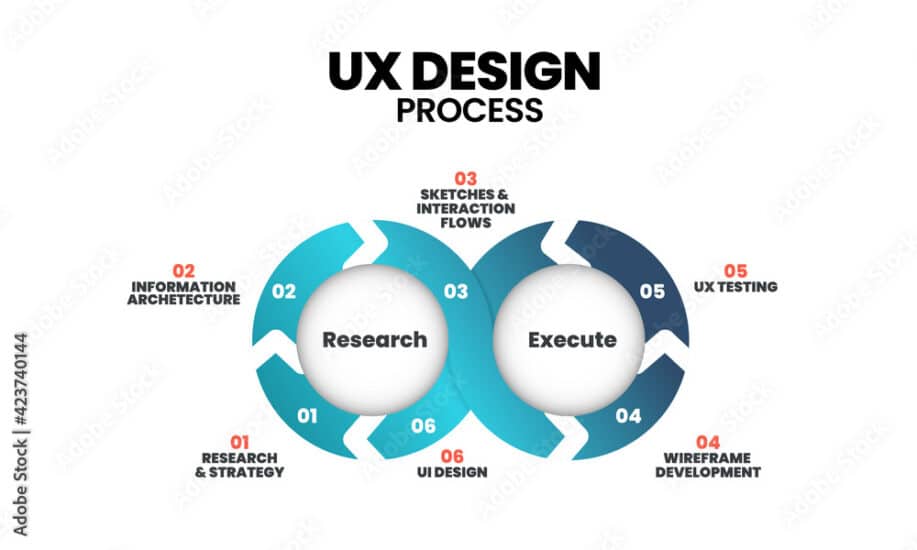If you’re wondering how data science and UX design can improve your eCommerce efforts, then take a few moments and continue reading for some very eye-opening insights. The collaboration of these two sectors can do more for eCommerce than many have realized in the past.
What is UX Design?
UX (user experience) Design is the process of creating a positive, effective, and results-oriented user experience for a product or website. This functionality process often starts with the acquisition of the user and then leads them through multiple steps to the desired result, such as an eCommerce sale.

UX design is one of the most important aspects of running an eCommerce business and a poorly designed site can instantly put off customers and lower conversion rates. In fact, this industry is so important that it’s often thought that $1 invested in UX brings $100 back to a company, with this being one of the critical elements of an online presence.
With this in mind, it’s no surprise to see that UX is an industry where innovation is common, with new tech practices being combined with the design in order to further push the bounds of what is possible. One of the most powerful cross-industry connections that UX has seen has been with data science, with the pairing allowing this artistic medium to gain a greater degree of rationality.
What is Data Science?
Data science, a domain of study that pertains to collecting and processing data to find patterns or useful insights, allows designers to make decisions based on what customers actually want to see, not what they suppose they’d like to see. As eCommerce businesses are continually generating data that can be analyzed at all times, the application of data science is incredibly pertinent.

In this article, we’ll explore the intersection of data science and UX design, and demonstrate exactly how the former can greatly improve the latter’s success.
Let’s get right into it.
How Can Data Improve User Experience Design?
Whenever a user begins their journey on an eCommerce website, the site begins to track all the
data it can about that person, as well as their movements on the website itself which include:
- Collecting information about which products they’ve clicked on
- What products they’ve added to the cart
- And even how long they were on each page
Absolutely everything is tracked and documented by the system.
When many different users move through a website, a great deal of data is generated about the
user habits of customers on the site. Typically, around 80% of this data is unstructured, which
means that there is no consistent format or location where it is placed – which is where data
science comes in.
Most commonly, a data scientist will connect a website to a cloud data warehouse, which will
serve as the location where all a company’s data is stored. Most commonly, these cloud data
warehouses offer a range of additional features, like security or analytical tools which can be used by data scientists. One needs only to view a list of comparisons between, for example,
Apache Druid vs Snowflake, to see that these warehouses have an advanced array of features
that allow data scientists to conduct a range of different processes on the data.
From the warehouse, a data scientist can then process this data to reveal trends within it. This
could reveal weak points in a company’s website, pinpointing a location on the site where many
people clicked off the page, or where a product description was only seen for a few milliseconds
and clearly didn’t captivate the audience.
By passing on these insights to the team in charge of user experience design, they can then go
about changing these aspects of the website to become more favorable. By repeating this, over
time, the combination of data science and UX design ensures that a company’s website is
continually refined and improved. With a better site comes higher conversion rates, more sales,
and an increased ROI for eCommerce businesses.
The Introduction of Continual A/B Testing
A very important aspect when balancing UX design and data science is A/B testing, which is the art of giving two different user groups two very similar designs and seeing which is more universally favored.
Whichever has a higher interaction rate will then be the new design going forward.
Over time, the continual use of A/B testing allows companies to continually improve what they’re offering, helping them to give their customers the best possible experience. The ability to do this all comes back to data analysis, with the huge volume of information generated by people coming onto an eCommerce website being the perfect environment to collect data from.
If your business has not adopted data analysis yet, you may consider hiring R developers or developers for Scala and Python.
A/B Testing Example: Google’s ’50 shades of Blue’ Experiment
A fantastic example of A/B testing was when Google ran a series of experiments on the shade
of blue they used for a payment button. By showing 1% of users each shade of blue, over a few
months, a team of data scientists was able to conclude which shade was the most popular.
By changing this button to that shade, Google increased its revenue by over $200 million,
demonstrating the huge effect that a simple A/B testing change can make on a business. While
this is an example that focuses on a huge and well-established company, the principle is exactly
the same, with data empowering eCommerce website owners to rapidly improve their user
experience design for the better.
Why Does Data Science Work So Well within UX Design?
There are two main reasons why the eCommerce industry is so perfect when it comes to implementing data science into UX design.
Reason #1
The first of these is that data is continually produced by these companies, as their whole presence is online. Having online sites allows them to rapidly collect huge quantities of data for analysis.
Every action taken when a customer lands on a company’s website is meticulously tracked.
Going far beyond just the route they take through a website, the total amount of time they spend
on each page, the aspects they clicked on, and even the location where they entered and exited,
everything is noted down.
With this, data engineers are able to extract a huge amount of information that they can then put
to work and inform designers’ choices going forward. Although the design is a deeply subjective
field, the insider information that reflects how well a particular design choice is being taken goes
a long way toward informing better design practices. Especially in the above choice at Google,
the change of even a certain tone of the color can lead to a massive shift in how users perceive and interact with a company and what they’re offering.
Over time, with continual refining due to the data generated by users on a company website,
designers can work alongside data scientists to improve a company’s website for the better,
increasingly creating a space in which users enjoy spending their time, and are more likely to
convert into paying customers.
Reason #2
The second, and main reason, is that data science then brings a level of rationality and certainty
to design, which is otherwise a completely subjective field. While one designer may have liked a
different shade of blue in the Google experiment, the data analysis results had a clear winner.
With this, a range of great selections can be proposed by UX teams, which can then be further
narrowed down by data science. With this, a near-perfect symbiotic relationship is established.
Final Thoughts
Although UX design is inherently artistic, while data science is perhaps more rigid, these two
fields actually support and help one another immensely within the world of eCommerce. By
turning to the power of data collection and analysis, UX designers are able to formulate much
more effective design decisions, ensuring that the websites they work on convert better, while
offering a more enjoyable user experience.
Combining data science with UX design can be an incredibly effective way for eCommerce
businesses to boost their overall profitability, considering that a well-designed website can
increase sales while ensuring people stay on the site longer.
As the applications of data science become even more expansive over the next few years,
we’re likely to see data-driven UX design innovated further than ever before.


Hello there, the information you provided is quite beneficial to us, and I personally appreciate you for sharing it!